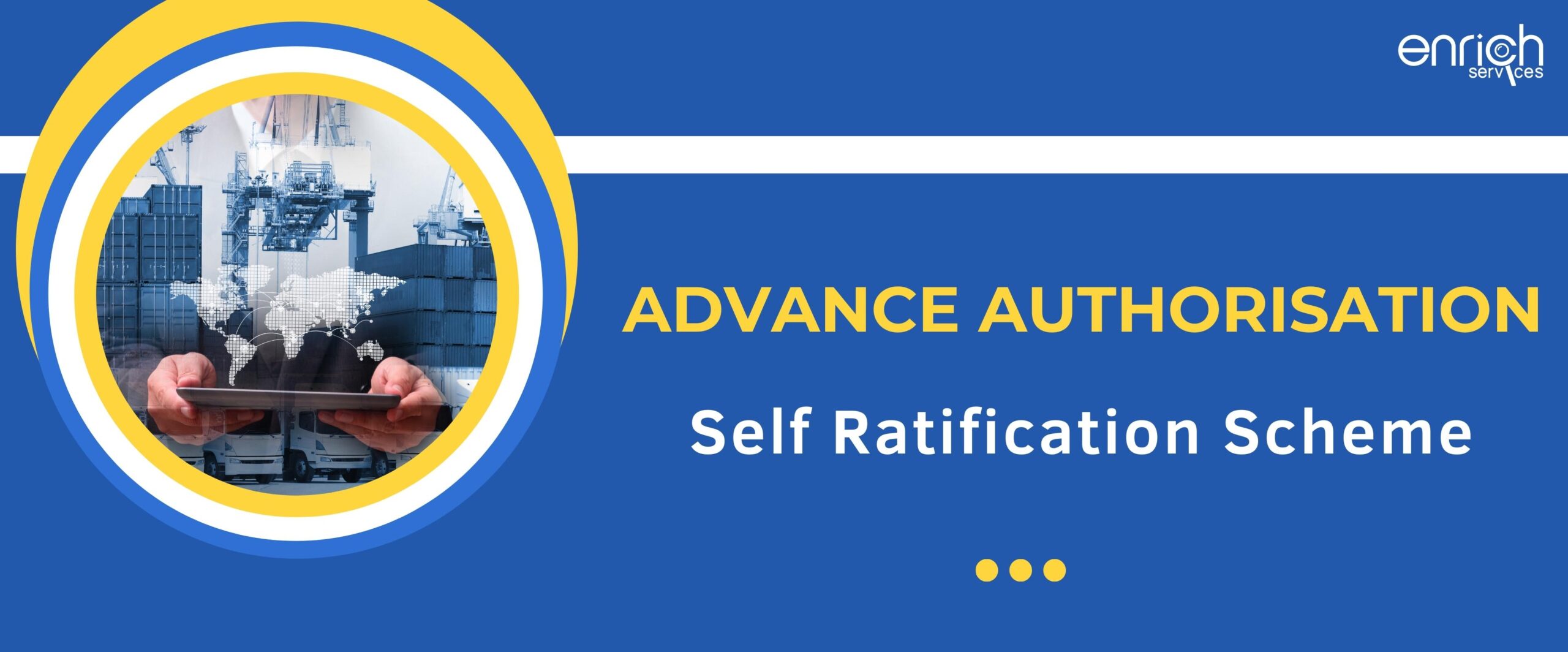Advance Authorisation – Self Ratification Scheme

Introduction
If you are keen to obtain a crystal clear understanding of the Self Ratification Scheme, then you can refer to Para 4.07A of Foreign Trade Policy (2015-2020). Any person can easily get all the nitty-gritty of the scheme through the FTP.
What is the Self Ratification Scheme all about?
In a case where there is no room for SION or Adhoc valid norms for an export product and the SION has been notified but an exporter must see to the fact that he/she is making use of the additional inputs in the process of manufacturing, eligible exporter can apply for Advance Authorisation under this scheme on Self Declaration and Self Ratification basis. The Advance Authorisation can be issued by the regional authority and this kind of case cannot be referred to the Norms Committee for further ratification of the norms.
How can one apply under Self Ratification Scheme?
An applicant can fill out the form online and verify all the details mentioned in the form to avoid any space for mistakes. Before filling the form out, the applicant can refer to Appendix- 4E and that too along with a certificate from the side of the Chartered Engineer in Appendix-4K.
The person applying must apply for inputs with the specific descriptions and he/she should not forget about the 8-digit ITS (HS) classification. The applicant should make it a point to put the correct technical name of the export products or import products in every place where the brand names are stated.
The Regional Authority (RA) can grant Advance Authorisation as per the terms and conditions that have been written in the FTP and Handbook of Procedures (2015-20). The Input-Output norms are taken as specified and the wastage claimed by the applicant is considered final. The ratification of the same is not needed by NC.
The applicant or his supporting manufacturers or co-licensee must keep a proper record of the consumption and utilization of duty-free that have been imported which is basically the materials procured domestically against each authorisation as affirmed in Appendix-4H. The applicant must submit an EODC application to the concerned regional authority in a prescribed format. Along with this, he/she must attach Appendix-4H in their file of documents.
Once the form reaches the regional authority, then it will be checked fully and the details present in Appendix-4H will be matched with that of inputs that have received a green light in the authorisation. All these records shall be preserved by the authorisation holder or manufacturer for a time span that has been specified in Para 4.51 of HBP.
The Directorate General of Foreign Trade (DGFT) has the power to audit the production and consumption records of the export items that come under the Self Ratification Scheme. And if by any chance, the applicant cannot reach out to DGFT due to any personal or professional reason then any authorised or nominated agency or a team of officers can also perform the same task from time to time.
This type of audit must be conducted within a period of three years starting from the date of issue of authorisation that is based on the Risk-Based Management System (RBMS). The exporters must provide the necessary facility to Cross-check the books of accounts or other documents.
The applicant must offer their sincere support and assistance to the authority to complete the procedure of the audit on time. DGFT must create the audit teams and state the way in which these audit teams will function from time to time with the help of administrative orders.
An exporter (manufacturer or merchant), who holds AEO Certificate under Common Accreditation Programme of CBEC is eligible to opt for this scheme.
The scheme shall not be available for the following export products: –
- All items covered under Chapter-1to 24 and Chapter-71of ITC(HS) Classification;
- Biotechnology items and related products; and
- SCOMET items
The scheme shall not be available for the following inputs: –
- All vegetable / edible oils classified under Chapter-15 and all types of oilseeds classified under Chapter-12 of ITC (HS)book;
- All types of cereals classified under Chapter–10 of ITC (HS) book;
- Horn, hoof and any other organ of animal;
- Wild animal products, organs and waste thereof;
- Honey;
- All items with basic customs duty of 30% or more;
- All types of fruits/ nuts/ vegetables classified under Chapter-7 and Chapter-8 of ITC (HS)book;
- Items covered under heading 2515, 2516, 3301, 3302, 3303 6801 and 6802 of ITC(HS)Classification;
- Items covered under Chapter 50 to 63 of ITC(HS) classification.
- Acetic Anhydride, Ephedrineand Pseudoephedrine;
- Vitamins;
- Biotechnology items and relatedproducts;
- Insecticides, Rodenticides, Fungicides, herbicides, Anti sprouting products, and plant growth regulators, disinfectants and similar products of all forms, types and grades;
- Waste/Scrap of all types; and
- Second hand goods
Inputs imported shall be subject to pre import condition and they shall be physically incorporated in the export product (making normal allowance for wastage). In case of local procurement under invalidation/ARO, the inputs shall be procured prior to manufacture of export item and shall be physically incorporated in the export product.
Wherever value of by-products and recoverable wastage generated during manufacturing process is more than 5% of CIF value, corresponding quantity of main input shall be reduced from the entitlement to the extent that value of disallowed quantity is equal to the value of by-products and recoverable wastage generated during manufacturing process.
Best DGFT Consultants in Hyderabad
Authors Bio:-

